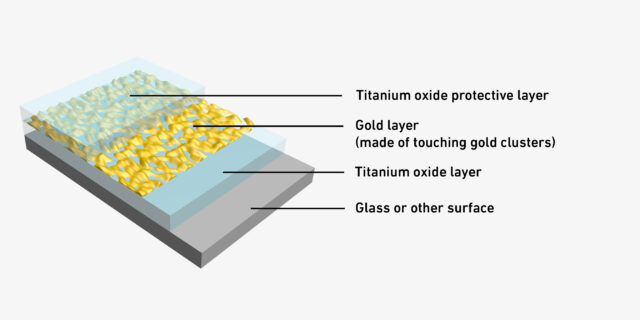
Scientists Develop Transparent, Sun-Activated Coating That Prevents Glass Fogging
A group of scientists at Switzerland’s ETH Zurich has created a thin and transparent coating that, when applied to glass and other clear surfaces, operates as an anti-fog barrier.
The team’s anti-fog coating includes a nanoscopic gold layer, which is sandwiched between two layers of the insulator titanium oxide. The clusters of gold in the middle barely touch each other, which allows them to absorb infrared solar radiation. This increases the coated material’s temperature by 8 degrees Celsius (46 degrees Fahrenheit). The heat is what prevents humidity-induced condensation from forming on the coated material.

(Image: ETH Zurich)
In a published Monday in the journal Nature Nanotechnology, the scientists say their coating produces a four-fold improvement in fog prevention and a three-fold improvement in fog removal. Because the coating is transparent, it could be used on vehicular and residential windows, eyeglasses, and glass displays. It’s only 10 nanometers thick, too (or 0.01 percent as thick as a sheet of standard printer paper), meaning the coating won’t add bulk to applicable materials. In fact, most people wouldn’t find it noticeable at all, especially on tinted surfaces. The scientists note that the coating won’t heat up vehicles or glasses, either, since the gold layer only absorbs a small portion of the sun’s radiation.
The gold-based coating is categorized as a “passively heated surface coating”—a category that the ETH Zurich team has worked on . Since the iteration they first published in 2019, the coating has become thinner and more pliable, making it more practical in real-world applications. It also contains less gold than it originally did. Nonetheless, the scientists are moving toward testing different metals within the coating’s conductive layer in an effort to make their patent-pending product more affordable.
Now Read: